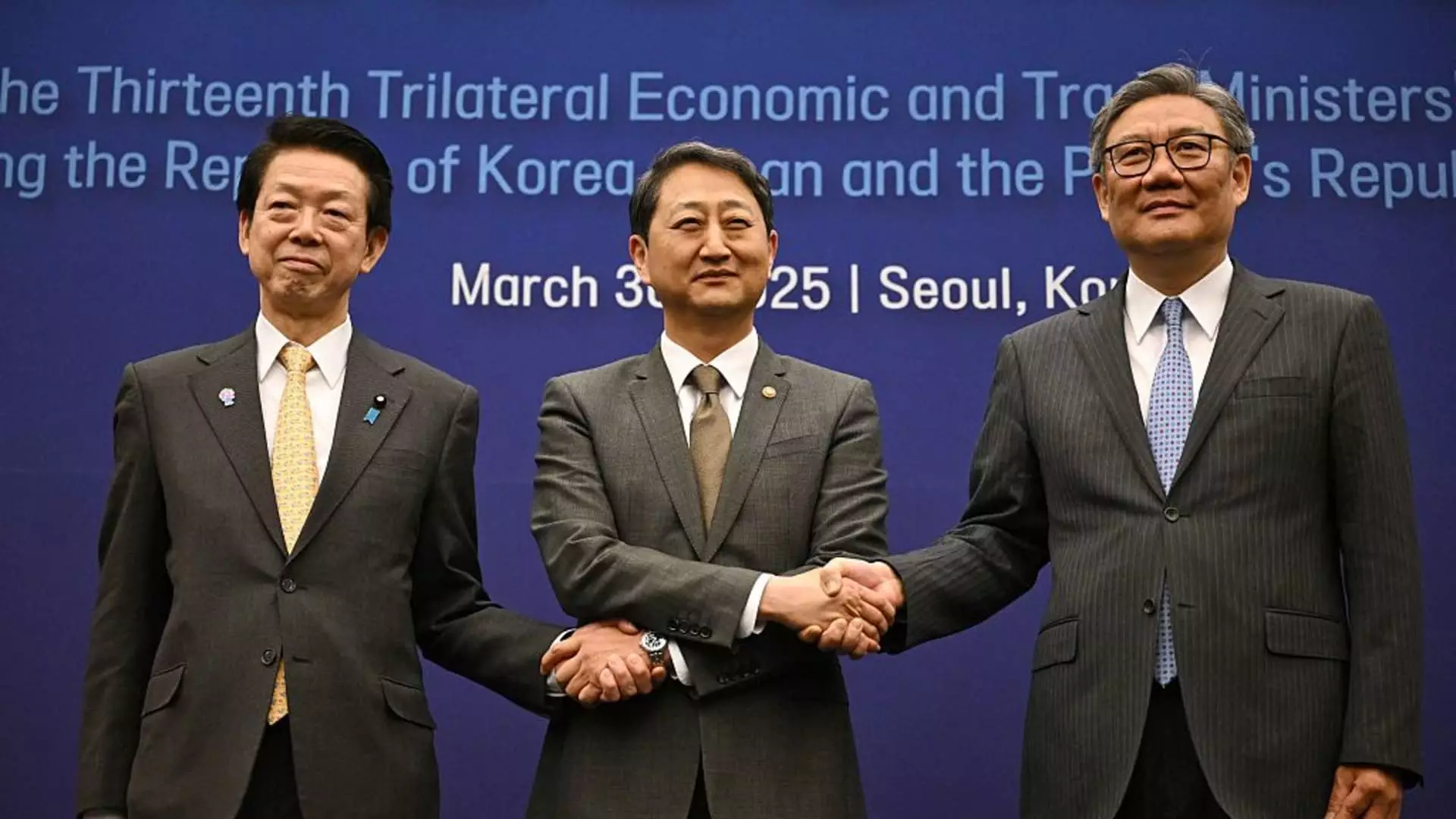In a significant yet unsettling reemergence of dialogue, South Korea, China, and Japan convened for their first economic meeting in five years this past Sunday. The atmosphere is laced with pressure; President Donald Trump’s trade restrictions hang heavy over the diverse yet connected economies in this dynamic trio. The longstanding tensions among these nations—compounded by political rivalries, historical grievances, and recent environmental concerns—only add complexity to what could be perceived as a fragile undertaking.
While the joint agreement to pursue a South Korea-Japan-China free trade agreement is commendable, it teeters on a precarious ledge. Past negotiations have floundered on unresolved territorial disputes and trust issues stemming from Japan’s controversial decisions regarding its nuclear disaster aftermath. This meeting, rather than signaling harmony, feels like a tentative truce in a landscape rife with underlying tensions.
Trade as a Weapon of Liberation
The terms circulated by South Korean Trade Minister Ahn Duk-geun about the “necessity to enhance” trade ties via frameworks like the Regional Comprehensive Economic Partnership (RCEP) raises eyebrows. The term “liberation day,” used by Trump, echoes ominously for Asian economies. Conceptually, this so-called liberation plays out more as a coercive blade than a benevolent hand, striking down interdependence and thriving commerce.
The implications of Trump’s 25% import tariffs on cars and auto parts are staggering. In addition to potentially decimating a crucial sector, this move highlights a violent swing in global trade from cooperative frameworks toward isolationist policies. South Korea and Japan, noted as significant vehicle exporters to the U.S., find themselves confused by participation in a dialogue centered on collaboration, while simultaneously feeling the weight of impending economic sanctions.
Trilateral Unity: A Facade?
On paper, this dialogue fosters hope for progression; in practice, skepticism lingers. The rhetoric from the involved parties suggests an intent to foster deeper ties, yet the reality is fraught with historical baggage: unresolved disputes over territory, Japan’s complicated historical narrative with its neighbors, and environmental ramifications that continue to sow distrust. Each nation carries its own narrative of grievance, which complicates discussions that are supposed to unite rather than divide.
Critically, while previous dialogues have ultimately faltered, the need for reassessment of collaborative strategies through economic stabilization remains salient. The urgency to mitigate damage from external pressures is paramount, yet the sincerity behind this newfound commitment to cooperation appears questionable. Are these nations positioning themselves as partners in a new economic order or merely engaging in a facade of unity amidst rampant rivalry?
The Future of Regional Trade
Ultimately, the advancements made in this dialogue might provide a glimmer of hope, yet much will depend on sincerity, follow-through, and a genuine willingness to overcome past grievances. In a world that increasingly favors bilateral agreements over multilateral strategies, the outcomes of such discussions may decide the future of trade relations in the region. The question, however, remains: will these economic titans forge a resilient alliance or remain ensnared in their historical complexities, failing to capitalize on the shared opportunities that lie ahead?



Leave a Reply